We have much more to do and your continued support is needed now more than ever.
Green STEM Grows in Greenpoint
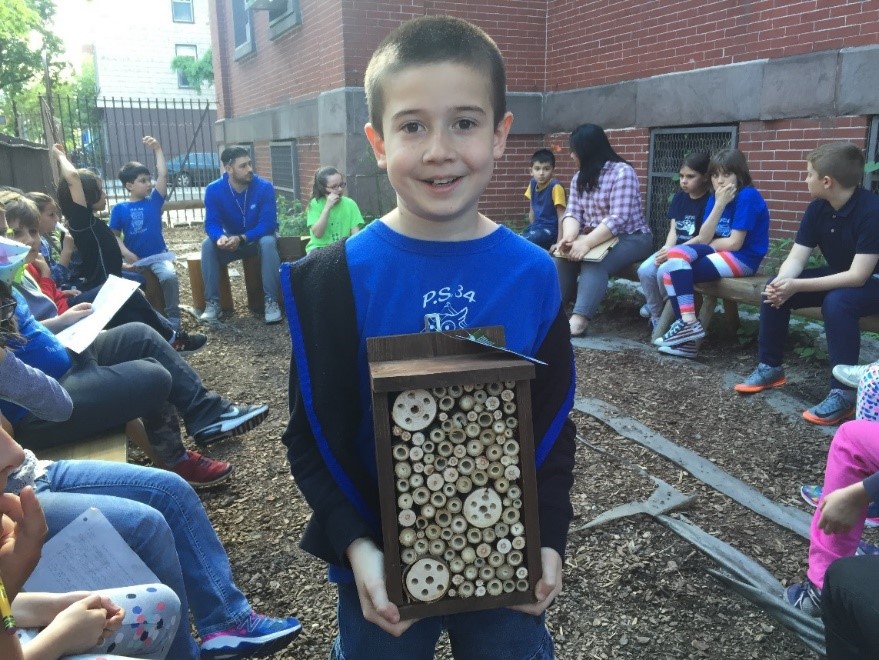
Where can you find scoops of soil, compost, and worm castings waiting to be examined under a microscope? Or prototypes of a rain water catchment system made out of upcycled cardboard, paper clips, and pipe cleaners? Or sketches of robots that feature innovative designs for capturing litter before it enters a storm drain as harmful pollution in our waterways?
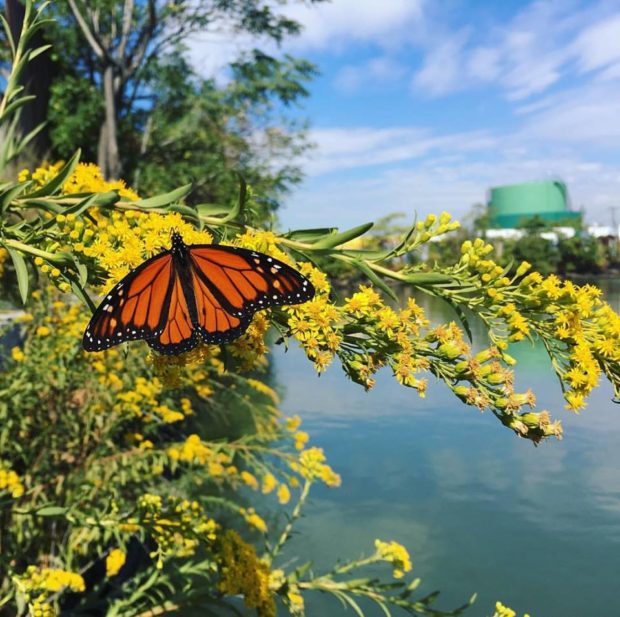
You may find all of these items in an engineering studio or a science lab…but if you visit one of the four Greenpoint Eco-Schools in Brooklyn, NY, you will definitely find all of these items in a Green STEM classroom! Green STEM combines environment-based education with traditional Science, Technology, Engineering, and Math (STEM) skill-building and emphasizes real world problem-solving. When employed in K-12 education, Green STEM enable students to learn and experiment with the tools that Scientists, Engineers, and other professionals use during their careers to make the world a better place. Most importantly, in these Green STEM classrooms, you’ll also find dozens of students, excited for the opportunity to creatively combine their innate curiosity about nature with new skills, new ideas, and the newfound confidence that comes from shaping their own learning experiences.
From January 2016 to December 2017, Greenpoint Eco-Schools staff facilitated an afterschool program to approximately 250 students at partner Greenpoint Eco-Schools PS 31, PS 34, PS 110, and MS 126. Known as the Eco-Schools Green STEM Afterschool Club, the afterschool program engaged students in nearly 500 hands-on, place-based lessons during the two-year period. The program was divided into four 8-10 week modules with educational content about Waste, Water, Wildlife, and “Watts” (green technology and robotics). During each of these modules, students spent 4 hours each week researching and exploring each Green STEM topic in both their classrooms and their community.
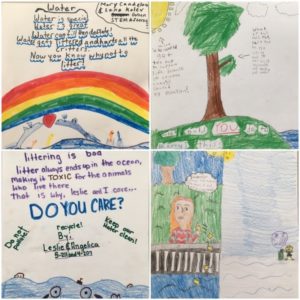
During Waste modules, Eco-Schools Green STEM Afterschool students learned about decomposition, compost and soil, landfills, recycling, the material lifecycle of common products, bokashi, upcycling, and more. They also took action and collected data about litter hot spots in their neighborhood and proposed the installation of new waste and recycling bins in the community as a solution to the litter problems. One class of Scientists from MS 126 spent 8 weeks digging deep into soil to learn about its structure, function, microbiology and the critters who live within it.
Recalling all the new discoveries she made during classes, 7th grader Jessica Ayala notes, “I learned that soil is the foundation for all life on earth. It is the Earth’s skin. I also learned about Green June Beetle Grub, nematodes, fungi, sow bugs and centipedes. These are nature’s recyclers or decomposers or “cleaner-uppers” — all these little creatures living in soil and compost. Who knew?!”. Inspired by the universe under their feet, this class of middle school students shared their new findings with the rest of the student body by painting and installing educational signs about soil biology throughout the school garden.
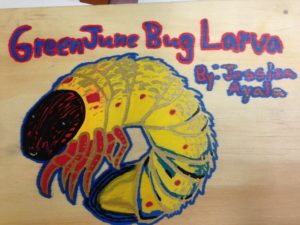
During Water modules, classes learned about the NYC watershed, researched how NYC drinking water gets to their homes and schools, investigated NYC wastewater infrastructure, understood how rain gardens, plants, and green infrastructure clean water, and more. Recognizing that water is a precious resource, students planned water conservation action campaigns that included inspecting faucets in the school buildings for drips, and writing letters to Principals and Custodial Engineers to alert them of the number of gallons being wasted daily due to the leaks. One PS 34 class participated in the NYC Department of Environmental Protection Water Resources Art & Poetry Contest and created poetry, songs, videos, and artwork about the value of water. A team of 3 students even won the contest by recording and submitting a song with original lyrics about the water cycle and its importance! The song begins:
Water starts out in a reservoir,
Surface water is our main source.
Water’s important for all life,
Everything needs water to survive….

While studying Wildlife, Green STEM classes explored Greenpoint’s local ecosystems to learn about habitat essentials, the relationships between plants and animals, biodiversity, native flora, gardening, and more. They researched and identified local bird, mammal, insect, and aquatic wildlife species and created neighborhood habitat maps. Because their school gardens provided wildlife with food, water, cover, and place to raise their young, classes also certified them as National Wildlife Federation Schoolyard Habitats. In order to learn about the natural history of Greenpoint, a PS 31 class of 4th and 5th graders adventured outside during several field trips to imagine the historical ecology and geography of their community. They saw new plants, the water bodies that surrounded their neighborhood, and learned about some of past and present inhabitants of Greenpoint. Excited and energized by all of this fascinating new knowledge, the class decided to write and act out a play through the eyes of the wildlife that have lived in Greenpoint throughout history; the play featured white-tailed deer, ducks, crabs, beavers, and more and told their story of living among the estuary, salt marshes, and streams of their neighborhood.
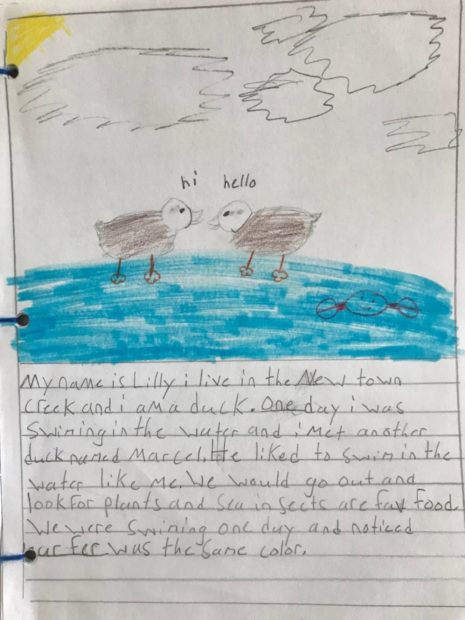
Using a water robotics curriculum developed by Stevens Institute of Technology, teachers guided teams of student engineers as they built unique aquatic robots during the Watts units. Also known as waterbots, these aquatic ROVs (remotely operated vehicles) attempted to complete missions based on genuine challenges, like rescuing a distressed swimmer (represented by a ping pong ball) or cleaning up floating pollution in a waterway. A class of students at PS 110 also applied their newfound understanding of robotics to brainstorm ideas for how they can use technology to safely assist in the cleanup of Newtown Creek, a local body of water with a rich ecological history but now considered one of the most polluted waterways in the nation after decades of industrial pollution. Students knew that litter, an old oil spill, and combined sewer outfalls (CSOs) damaged the health of the Creek and put wildlife at risk. So they made a list of things they can do now to help the creek (use less plastic, conserve water, etc) and envisioned how robots of the future could contribute to its restoration by preventing and collecting contaminants before they cause harm.
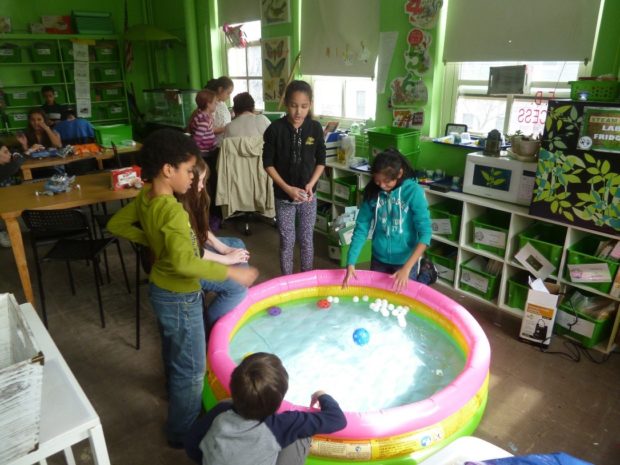
Thanks to all of these significant, place-based educational experiences, the Green STEM Afterschool Club students discovered so much about nature, wildlife, and their community. When learning is relevant to their lives, students become more engaged with their studies and understand they have the ability to make a difference—we can’t wait to see how students continue to apply their Green STEM skills to make a difference in Greenpoint!
Spend more time with the Greenpoint Eco-Schools Green STEM Afterschool Club here





















